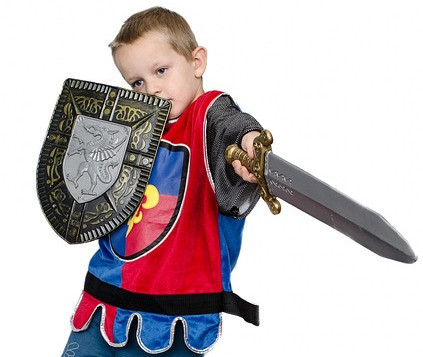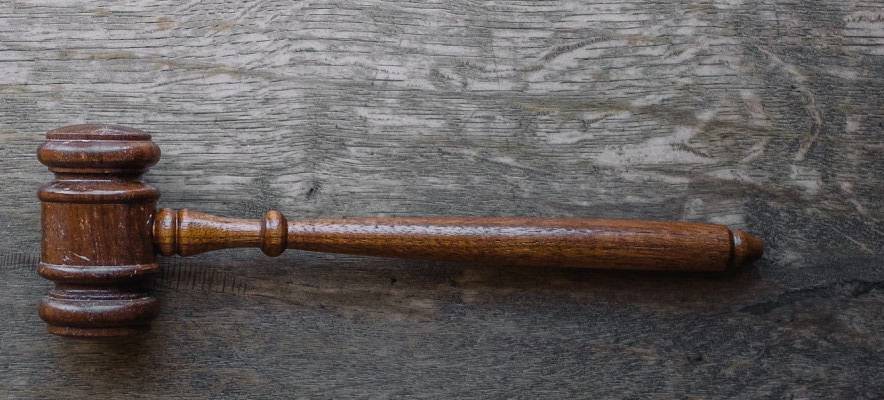The contentious topic of violence and aggression in the realm of Lego bricks. Explore its impact on the brand, community, legal aspects, and more.
Introduction:
The colorful world of Lego, known for fostering creativity and imagination, has not been immune to controversy. In recent years, the issue of violence and aggression depicted through Lego sets and themes has ignited discussions within the Lego community and beyond. This article examines the multifaceted dimensions of this controversial topic, delving into its impact on the Lego brand, community reactions, legal implications, real-world harm, and the steps Lego is taking to address these concerns.
The Impact on the Lego Brand:
Lego has long prided itself on promoting positive values such as creativity, collaboration, and learning through play. However, the inclusion of violent and aggressive themes in some Lego sets has raised questions about the compatibility of these themes with the brand’s core principles. Critics argue that such themes can potentially undermine the constructive nature of Lego play and send conflicting messages to young builders. Lego’s reputation as a family-friendly and educational toy brand hangs in the balance as it navigates the tension between creative freedom and responsible content.
Community Speaking Out:
Within the global Lego community, a diverse range of voices has emerged, expressing differing viewpoints on the inclusion of violence and aggression in Lego products. Some community members believe that these themes provide an opportunity for storytelling, allowing children to explore complex emotions and narratives. However, others are concerned that exposure to violent content at a young age could desensitize children to real-world violence and have long-lasting effects on their behavior. Online forums, social media platforms, and fan conventions have become platforms for these discussions, highlighting the significance of community engagement.
Influence on Community Members:
The controversy surrounding violence and aggression in Lego sets extends beyond online discussions. Parents, educators, and caregivers play a pivotal role in shaping children’s play experiences. As they grapple with the decision to purchase sets that feature violent themes, these individuals must balance their desire to encourage imaginative play with their responsibility to ensure age-appropriate content. Lego’s communication and engagement with these stakeholders are crucial in addressing their concerns and guiding their choices.
Legal Considerations and Case Law:
The depiction of violence and aggression in Lego sets has also led to legal considerations. In some instances, concerns have been raised about the potential impact of such content on children’s psychological well-being and behavior. While there is limited case law specifically addressing violence in toys, some jurisdictions have regulations in place to ensure that toys do not pose physical or psychological harm to children. Legal experts continue to debate the extent of the responsibility that toy manufacturers bear in this regard.
Real-World Harm and Government Involvement:

Instances of harm caused by exposure to violent media and toys have been documented in psychological research. While the direct impact of violent Lego sets on children is a complex subject, there is evidence that continuous exposure to aggressive imagery can influence behavior. This has prompted some advocates to call for increased government involvement in regulating the content of children’s toys. Policymakers are faced with the challenge of striking a balance between protecting children and preserving artistic expression.
Criminal and Civil Cases:
Even though no big-deal court dramas tied to violent Lego sets have popped up, the larger gab around how media chats with kiddos’ actions has lit the fuse on legal rumbles with other media types. Courtroom tiffs over video games and other rough-and-tumble stuff have tossed up questions about how much the folks who dream up and dish out these things should answer for any not-so-nice ripples on the folks who dive into them, especially the young sprouts.
Lego’s Plan to Address the Issue:
Lego acknowledges the concerns raised by its community and stakeholders regarding violent and aggressive themes. The company emphasizes that it takes its role as a responsible toy manufacturer seriously and is committed to ensuring that its products align with its values. In response to feedback, Lego has introduced guidelines for its designers to ensure that violent and aggressive content is portrayed in a thoughtful and age-appropriate manner. Additionally, Lego encourages open communication with its community to better understand their expectations and concerns.
The History of Violence in Lego:
The incorporation of violence and aggression in Lego products is not a recent phenomenon. Over the years, Lego has introduced themes related to conflict, battles, and weapons. These themes often reflect cultural and societal influences, as well as trends in popular media. As societal attitudes toward violence evolve, Lego finds itself grappling with the challenge of balancing its historical legacy with contemporary expectations.
Worldwide Involvement:
The debate around violence in Lego sets knows no borders. Being a global brand, Lego’s creations find homes in many countries, each with its own cultural norms and rules. This worldwide embrace heightens the need to tackle the worries of parents, educators, and kiddos on a grand stage..
Engaging Content to Entice the Reader:
The fuss over rough and tumble in Lego sets, though knotty, opens up a bigger chat about how media chats with young brains. Diving into this matter nudges us to think hard on what’s on the plate of toy makers, parents, and everyone around. As fans of Lego and thoughtful folks dig into these talks, it’s key to weigh the ups and downs of showing kids violent tales, while also giving a nod to the cool side of dreamy play.
Conclusion:
The chatter about violence and rough stuff in Lego sets highlights how toys can mold young minds. As Lego treads through this tricky topic, it’s juggling artistic liberty, what folks expect, and kiddo’s well-being. At the end of the day, sorting out this debate will not just shape Lego’s road ahead, but also add a chapter to the big talk on playing nice, letting creativity flow, and how toys play a part in growing up.
Community Involvement and Engagement:
The Lego community’s engagement with this issue exemplifies the value of open dialogue and active participation. By voicing concerns, sharing perspectives, and collaborating with Lego, community members play a crucial role in influencing the company’s decisions and shaping the direction of its products. Through continued engagement, stakeholders can work together to ensure that Lego remains a source of inspiration, education, and joy for builders of all ages.
The Seriousness of the Topic:
Though Lego sets aim to be fun and brain-boosting, adding a dash of violence and aggression stirs in a tricky twist that calls for some serious chin-wagging. The possible ripple effects on kiddos’ outlook, actions, and growing up journey make this chit-chat not just timely, but pretty big in the whole scheme of young’un well-being and smart fun.
In a globe where the kiddos bump into all sorts of media, the yap about the rough stuff in Lego sets flags the need for some wise choices by parents, teachers, and the folks who cook up these toys. As this gabfest goes on, it’s clear as day that landing on happy middle ground asks for a team huddle to cheer on imagination, kindness, and top-notch values in the young brains.
Thank you for visiting, I hope you enjoyed Your visit with me on this controversial topic.
If you have any questions or comments please leave them below



I found your article on the controversy surrounding violence and aggression in the world of LEGO to be quite thought-provoking. It’s interesting how such a beloved toy can spark debates about its impact on children’s play and perceptions.
I’m curious to know, do you think LEGO should actively address these concerns by adjusting their product offerings, or is it primarily the responsibility of parents and caregivers to guide children’s play experiences with LEGO sets?
Thank you for sharing your thoughts, kiersti! I’m glad to hear that the article on the controversy surrounding violence and aggression in the world of LEGO got you thinking. It’s intriguing how a beloved toy can indeed generate debates about its influence on children’s play and perspectives.
You’ve brought up an important question about responsibility. In my view, it’s a combination of both LEGO and parents/caregivers playing a role in addressing these concerns. LEGO, as a responsible toy manufacturer, can take steps to ensure that their product offerings cater to a diverse range of play experiences that align with positive values and developmental needs. This might involve adjusting certain aspects of their sets to minimize potentially negative impacts.
At the same time, parents and caregivers play a significant role in guiding children’s play experiences and conversations about the content they interact with. Open communication, setting boundaries, and discussing the themes presented in LEGO sets can help children develop a balanced understanding and healthy perspectives.
Ultimately, it’s a collaborative effort between the toy company and the caregivers to create an environment where children can engage with LEGO sets in a way that promotes creativity, learning, and positive values. What are your thoughts on this matter? Do you believe there’s a certain balance between LEGO’s responsibility and the role of parents/caregivers in guiding children’s play?
lou@lousclassicbrickshouse.com
Hey Lou,
Thanks for this article. Very interesting and incredibly detailed.
I love Lego, as do my kids and it’s something we have always sat down with and engaged. We’ll literally pour a bucket out on the floor and sift through, passing each other pieces building and making ‘stuff’. It’s a timeless ‘toy’, and as detailed in your post, something everyone can enjoy, no matter their age.
It’s interesting the challenges that Lego as a toymaker has trying to confront the complex task of finding equilibrium between safeguarding children and upholding artistic freedom, but as your article has excellently pointed out there are potential ramifications on the minds of children to whom the toy is directed.
Really great article, thanks for taking the time to provide this information.
Cherie :o)
Thank you so much for your kind words, Chezstar! I’m thrilled to hear that you found the article on violence and aggression in Lego sets interesting and detailed. It’s heartwarming to know that Lego holds a special place in your family’s activities, providing a timeless and engaging experience that spans generations.
Your description of pouring out a bucket of Lego pieces and creating together is truly heartwarming. It’s moments like these that foster creativity, collaboration, and meaningful connections among family members, regardless of age. Lego’s ability to bring people together in such a way is truly remarkable.
You’ve highlighted a critical point about the challenges Lego faces in maintaining a balance between safeguarding children and allowing artistic freedom. It’s a complex task indeed, and your understanding of the potential impact on children’s minds reflects a thoughtful perspective. I’m glad the article resonated with you and provided valuable insights.
Thank you for taking the time to share your thoughts, and I’m glad the information was appreciated. If you have any further thoughts or experiences to share about your family’s engagement with Lego, I’d love to hear more!
lou@lousclassicbrickshouse.com
I’m so glad I stumbled upon this article. The topic of violence and aggression in Lego sets is one that I’ve been curious about, especially as a parent trying to make informed choices about the toys my children play with. The article does an excellent job of presenting various perspectives within the Lego community, and it’s eye-opening to see the diversity of opinions. It’s clear that Lego is taking the matter seriously, and their commitment to responsible content is commendable. As a society, we must continue to engage in these discussions to ensure that our children’s play experiences are both enjoyable and beneficial.
I couldn’t agree more with your sentiments, Matias. It’s wonderful to hear that you found the article on violence and aggression in Lego sets thought-provoking and informative. As a parent, making informed choices about the toys your children engage with is crucial, and it’s heartening to know that the article provided you with a well-rounded perspective on this matter.
The diversity of opinions within the Lego community indeed highlights the complexity of the issue. Lego’s dedication to responsible content and their willingness to engage in discussions about violence and aggression in their sets is truly commendable. It’s through open dialogues like these that we can shape a safer and more enriching play environment for our children.
I’m curious to know, as a parent, have you found it challenging to strike a balance between letting your children enjoy playtime while also ensuring that the content aligns with your values? Your insights could offer valuable perspectives to other parents who are navigating similar considerations.
Lou